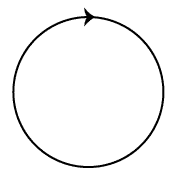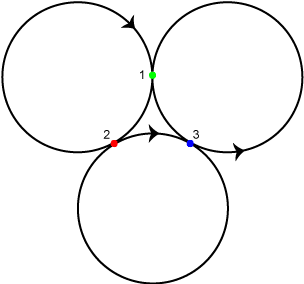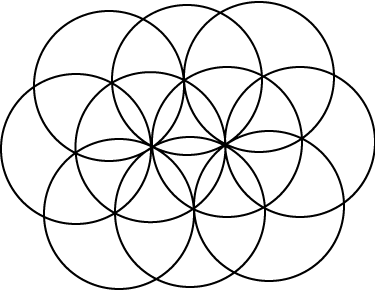Everything happens in cycles.
For simplicity’s sake, we’ll think of cycles as circles. This is useful because no matter how many twists and turns it may take, a cycle always brings you back to where you started. Circles are also one of the most universal symbols you will find for cycles.
You can also find circles everywhere around us.
The moon circles the Earth. The Earth circles the sun. The sun even circles the galaxy. The seasons turn about the wheel of the year, one into the next, growing and dying, again and again and again.
In our own lives, we’re always in at least one cycle.

The problem with a single cycle is that you never really get anywhere with it. You just go around and around and around, always running into the same successes and same problems. A single cycle is stagnation. And just as it appears, growth-wise it’s just one big zero.
The good news is, there’s never just one cycle around. There are always at least two.

Now that we have a second cycle around, there’s at least one point (that red dot) where you can move from one cycle to the other. With just these two cycles to choose from, there’s not a whole lot of new growth or discovery that can go on, but it’s more than just the single cycle would have allowed. The problem here is that we can stick to either once cycle or the other, switching back and forth through that single point of contact.
So let’s add a third cycle, just to make things interesting.

Now we’ve got three points of contact. To get between any two, we have our choice of two paths–a longer one and a shorter one. With three cycles to choose from, we now have six paths to follow. As we become aware of more interlocking cycles, we have more variety to choose from. We have more ways of getting from point 1 to point 3. We have more chances to explore and grow. This is still a very plain and simple system, if only our own lives were this simple and easy to follow, we’d all be doing a lot more, right?
So let’s add a fourth cycle. This time, though, let’s start to represent things in a more complex way. Most cycles intersect more than one or two other cycles in more than one spot.

Now, with four interlocking cycles, we have nine points where we can change direction. Nine different chances to jump from one cycle to another. If we are aware of this, we have no excuse to not make that jump if we are unhappy with the cycle we are currently in. We only have to push through until we get to a junction point.
Sounds easy, right?
We all know it’s not quite that simple.

In our lives, the cycles are near infinite in number. They are interconnected to such an extent, it’s often difficult to tell where one begins and another ends. Cycles come at us from all angles–not just the paltry two-dimensions represented by these simple diagrams. They have a depth as well as height and width. Because of that, we may not even be able to see some of the cycles we are part of from where we are now.
But, with time and patience and practice, we can start to see patterns. And patterns help us pick out the cycles we are part of. They help us take note of when we’re seeing the same thing again and again and again. Patterns can serve as signposts, eventually letting us know where the “exit ramps” are in our cycles.
When we can ride our cycles like well trained horses, they will take us where we need to go. When we can read the patterns within our cycles, we can take them where we want to go.
The difference is subtle, but important.
[…] and mostly internal. Our perception and inner narrative gets colored in one way or another and that creates a cycle. This often happens on a subconscious […]